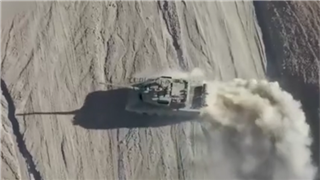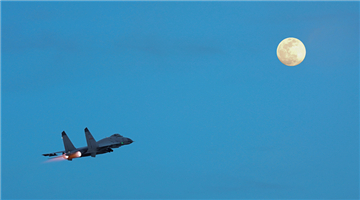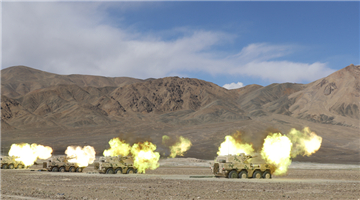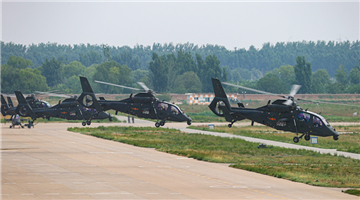By Gao Shengyi
The NATO-led exercise Steadfast Defender 2021 recently concluded. While NATO stressed the exercise was intended to reinforce the bloc’s collective defense capability, public opinions held them as much cry but little wool.
Annual flagship exercise
Led by Allied Command Operations, the Steadfast Defender 2021 involved 22 participating countries, including 20 NATO members and Finland and Sweden. Three commands – the Joint Force Command Norfolk, Allied Joint Force Command Naples, and Ulm Joint Support and Enabling Command– participated in the commanding.
The exercise mobilized more than 9,000 troops, 20 vessels, 40 warplanes and over 600 vehicles of all sorts, including the US Navy 2nd Fleet, Queen Elizabeth carrier battle group, and the NATO Readiness Joint Task Force mainly comprising Turkey’s 66th infantry brigade.
The exercise was designed to examine the troops’ readiness and military maneuverability in the scenario of an ally state under armed attack. It consisted of three parts – live-fire exercise on the sea, exercise at the command post, and joint exercise and training on land. The first part was carried out on the west coast of Spain, including cross-Atlantic reinforcement and joint assault on the sea; the second part was carried out in Germany’s Ulm, where a desktop dry run was made of the allied forces’ cross-regional maneuvers on the European continent; and the third part was carried out in Romania, including troops integration and live-fire shooting.
As far as location is concerned, that most of the exercise was carried out in Romania revealed NATO’s intention of enhancing the "forward presence" of its troops; regarding subjects, the long-distance sea assistance and land maneuvering both tested the troops’ fast response capability; as to scale, Steadfast Defender 2021 not only involved the joint operations of 22 countries, but also the integration of such domains as land, sea, air and cyberspace, with the key purpose of enhancing collective defense capability.
The exercise has limited effects
NATO claimed that the exercise, of flagship importance this year, had reached the goals in four aspects.
The newly formed Joint Force Command Norfolk and Ulm Joint Support and Enabling Command were respectively responsible for the on-sea live-fire exercise on the west coast of Spain and the desktop dry run of allied forces’ massive land maneuvering on the European continent. This was the first time for both of them to command a real exercise and training event, marking the completion of NATO’s Command Structure reform starting in 2018.
The exercise had several highlights – the Turkey-led NATO Response Force's quick maneuver to Romania by road, railway and air; North American reinforcements' maneuver across the Atlantic Ocean; and the desktop dry run of allied forces' massive and fast maneuver on the European continent, all to enhance the allied forces' ability of long-distance cross-border maneuvering.
During the exercise, NATO explored the interconnectivity among the member states' equipment and systems. For instance, technicians at US Navy 2nd Fleet used the Virtual Desktop Infrastructure (VDI) for the first time to remove the communication barriers between NATO allies and the US Navy.
NATO believes that the Atlantic Ocean is the weak point on its defense, and the undersea cable connecting North America and Europe, in particular, faces the risk of being cut off. During the exercises, the Joint Force Command Norfolk organized live-fire exercises on the sea and examined the capability of joint commanding, long-distance assistance and interoperability of the regional defense force, in a bid to strengthen regional control and shore up the weak link in collective defense.
The exercise tested NATO forces' maneuverability to some extent, but the real-combat effects remain doubted. On the one hand, the involvement of about 9,000 troops is limited given NATO's defense demand; on the other hand, the desktop dry run of the allied forces’ massive maneuvering across the European continent is unable to fully verify their actual commanding and control capability or their state of war-readiness.
Since the conflict between Russia and Ukraine broke out, NATO has carried out exercises and training more frequently with a clear intention of deterring Moscow and rooting for Kyiv. The Steadfast Defender 2021 was intended for the same purpose but had generated the opposite results, as Russia announced to adjust and upgrade its military presence on the European border in response to threats from NATO. In general, the exercise couldn't cover up the bloc's current conflicts and dilemma and were of limited substantial effects.











